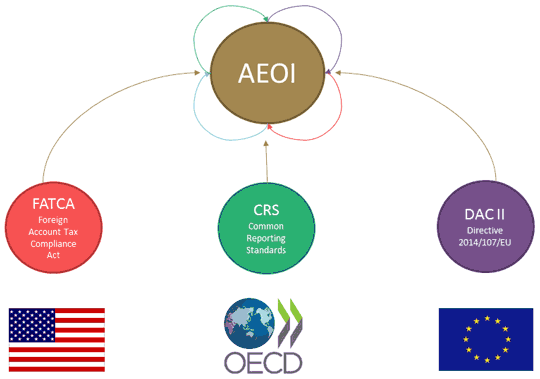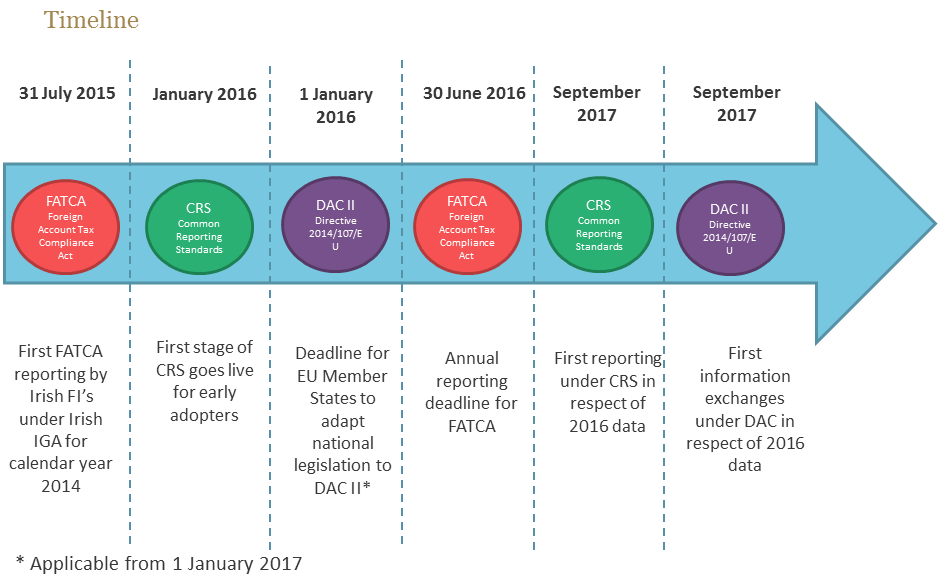
Asset Management Intelligence - Q1 2016 - The Common Reporting Standard
- Published
- Feb 19, 2016
- Share
What is the CRS?
Any fans of the old Star Trek series and movies might remember a line from the associated Star Trekkin' song with the words: "It's life, Jim, but not as we know it." Well it could be said that the CRS is simply FATCA, but not as we know it.
 The introduction of the Common Reporting Standard ("CRS"), the result of an Organization for Economic Cooperation and Development ("OECD") initiative for the Automatic Exchange of Information ("AEOI"), will affect Irish domiciled funds in 2016 and beyond.
The introduction of the Common Reporting Standard ("CRS"), the result of an Organization for Economic Cooperation and Development ("OECD") initiative for the Automatic Exchange of Information ("AEOI"), will affect Irish domiciled funds in 2016 and beyond.
FATCA and the CRS are both part of an ever more popular move towards more AEOI between jurisdictions. These reporting requirements join with a further EU regulation referred to as Directive on Administrative Cooperation in Tax Matters ("DAC2"), which will replace a previous regulation governing the exchange of certain savings information between financial institutions and other jurisdictions. The requirements of all 3 have been illustrated below.

FATCA is a regime aimed at U.S. citizens with offshore accounts and investments. In Ireland, FATCA was implemented through a Model 1 IGA with the U.S. and also domestic legislation which lead to the first set of reporting in June 2015.
The CRS effectively applies the principles of FATCA on a global scale. The OECD has agreed on the format of an information standard which will be implemented by its various member jurisdictions. It is a global approach to require the disclosure of income earned by individuals and corporate entities with a view of preventing tax evasion and improving compliance. The CRS came into effect for Irish domiciled funds and investment entities from 1 January 2016, with the first reporting required in June 2017. Ireland has introduced domestic legislation and regulations which will require financial institutions to comply with the reporting requirements. Fifty-six countries have committed to exchanging information in 2017.
The type of financial institutions which come within the scope of the CRS, and indeed the type of information which must be gathered and reported, is very similar to the requirements under FATCA, including investor details, and account balances.
It all sounds very like FATCA. So what are the differences you might ask? One of the significant differences is that the CRS will operate on a "carrot" approach only, without the "stick" element of FATCA, namely withholding tax. Non-compliance with the CRS will not result in the imposition of withholding tax by any financial institutions.
The other principal differences are illustrated here:
|
Concept |
FATCA |
CRS |
|
Withholding tax? |
Yes |
No |
|
De minimis threshold for individual account holders? |
Yes |
No |
|
Country specific entity/product carve outs? |
Yes |
Yes |
|
Driven by citizenship? |
Yes |
No |
|
Reporting exemption for certain debt/equity interests regularly traded on an established security market? |
Yes |
No |
Conclusion
An Irish-domiciled fund or other financial institution will now have to apply the broad principles of FATCA to global investors. It will be required to continually report under FATCA for U.S. citizens, and report under the CRS for investors in any other jurisdiction which has signed up to implement the CRS.
As can be seen from the above there is a significantly increased scope with respect to due diligence and reporting requirements under CRS and all relevant institutions should now examine their systems and processes to ensure that all relevant information on investors is captured for both FATCA and CRS purposes.
Asset Management Intelligence - Q1 2016
- Taxes: Looking Back, Looking Ahead
- The Common Reporting Standard
- Enforcement Actions by the SEC – Cases from 2015 Provide Guidance for Private Fund Advisers
- Reminder: New ASU 2014-11 Disclosures Effective for Calendar Year End 2015 Funds with Repo Lending Accounted for as a Secured Borrowing (ASU 2014-11)
- Alternative Investment Industry Outlook for Q1 and Beyond in 2016
- Compliance and Regulatory Services ("CARS") Hot Topics for January 2016
Contact EisnerAmper
If you have any questions, we'd like to hear from you.
Receive the latest business insights, analysis, and perspectives from EisnerAmper professionals.











